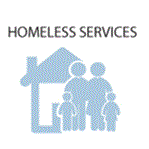Though the proposed District budget includes substantial investments to help families that become homeless, the District needs to expand affordable housing for very low-income residents to create the “truly healthy and vibrant community” envisioned in the new Interagency Council on Homelessness (ICH) Strategic Plan.

The Strategic Plan recognizes that “in the long run, increasing the supply of affordable housing is the single largest homelessness prevention measure we can take as a community.” Yet the proposed new budget provides no funding to expand rental assistance — the program most helpful to the working poor and households on low fixed incomes — except rental assistance tied directly to homeless or formerly homeless families. With an additional investment of $5 million, the DC Council would make progress towards this goal by helping more than 300 families afford rent through the Local Rent Supplement Program (LRSP).
The District budget proposed for fiscal year (FY) 2016, adds substantial funding to help families move out of shelters and into their own homes. In that aspect, it meets the annual targets included in the recently passed ICH Strategic Plan.
- More permanent housing for chronically homeless. The proposed budget provides Permanent Supportive Housing (PSH) to 110 families who have been homeless multiple times or for a long time and have a significant disabling condition, such as a physical or mental health issues.
- More help for families who need more time to get back on their feet: Rapid Re-Housing (RRH) helps families find employment and temporarily helps them pay rent — generally up to 12 months. But some families, particularly those with a parent under 25, need more intensive support and longer periods of rental assistance. To meet this need, the agency is launching an Intensive Rapid Re-Housing program in FY 2016 to serve 80 families.
- More long-term affordable housing for families who leave shelter: The budget helps 147 families who either need help paying rent after their short-term RRH rental subsidy ends or who no longer need intensive services of PSH but still need help paying their rent. This new initiative, Targeted Affordable Housing (TAH), provides long-term affordable housing and was recommended in the Strategic Plan.
The new initiatives will help ensure that families who become homeless can leave shelter and find housing that will remain affordable. But there is not much in the budget to provide affordable housing to very low-income families who have not entered the homeless services system.
The best way to help create affordable housing for these families is through rental assistance programs that require families to pay 30 percent of income for rent but then cover the rest. The proposed FY 2016 budget provides no new rental assistance in this manner.
Now that the District is making great strides to help families leave shelter for good, the next step is to create more affordable housing so that other families never become homeless.
Kate Coventry is a DCFPI Policy Analyst and voting member of the Interagency Council on Homelessness.
To print a copy of today’s blog, click here.
